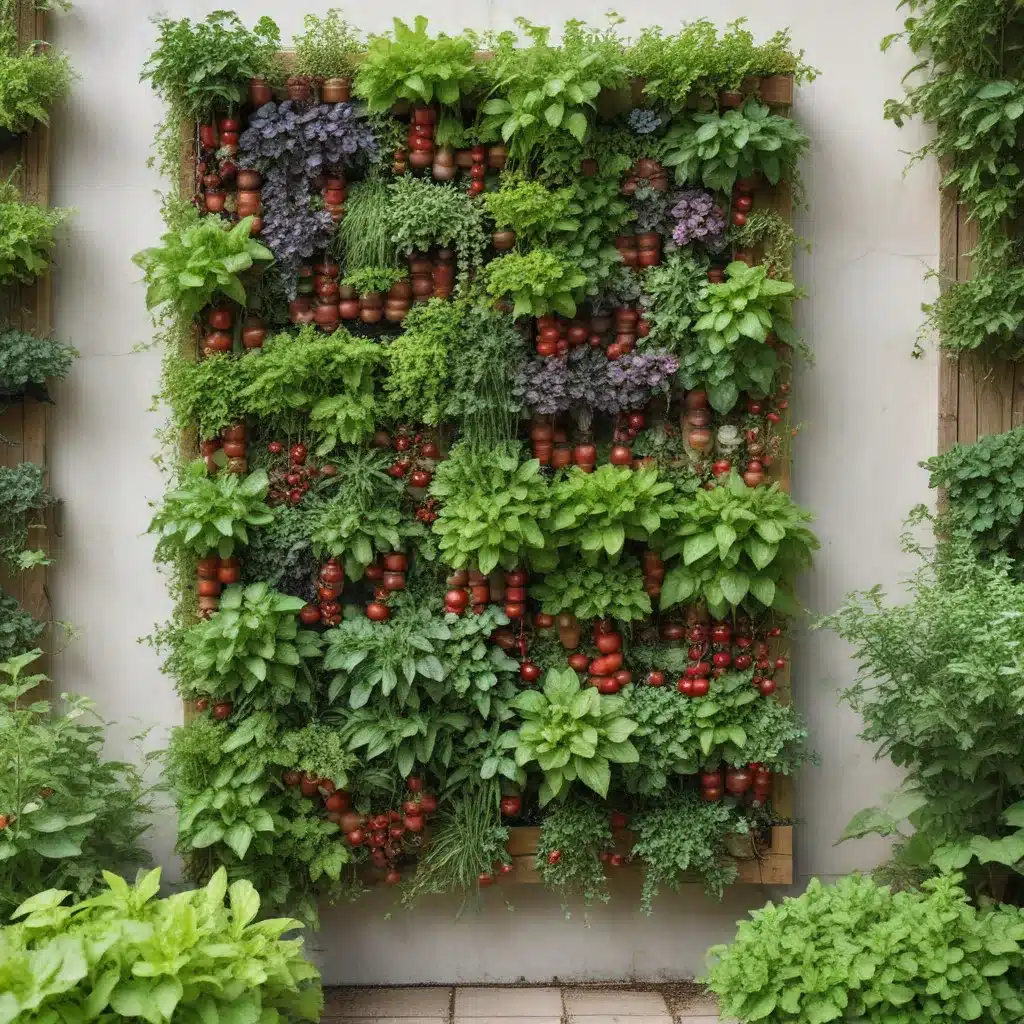
Backyard Bounty: Expanding Your Edible Landscape with Vertical Gardening Techniques
Vertical gardening has transformed the way we think about maximizing our limited outdoor spaces. By skillfully incorporating raised planter beds, trellises, and wall-mounted planters, you can dramatically expand the productive capacity of your backyard or patio. Whether you’re an experienced gardener or just beginning your food-growing journey, these innovative vertical techniques can help you unlock the true potential of your edible landscape.
Exploring Vertical Structures
Raised planter beds are a game-changer for vertical gardening. By elevating your growing area, you can create tiered levels that accommodate a wide variety of sun-loving edibles, from tomatoes and peppers to trailing vines like cucumbers and squash. These beds also make maintenance tasks, such as weeding and harvesting, more ergonomic and accessible.
Trellises and arbors, on the other hand, provide essential support for climbing and vining plants. Pole beans, peas, tomatoes, and even some types of squash can be trained to grow upright, freeing up valuable ground space for other crops. Strategically placed trellises can also serve as visual dividers, adding an element of structure and design to your edible landscape.
For those with limited square footage, wall-mounted planters offer a brilliant solution. These vertical systems allow you to cultivate a diverse range of herbs, lettuces, and compact vegetable varieties without sacrificing precious ground space. By leveraging the vertical dimension, you can transform bare walls, fences, or even small balconies into thriving oases of homegrown goodness.
Maximizing Space Efficiency
One of the key benefits of vertical gardening is its ability to pack a lot of productivity into a small area. By selecting compact vegetable varieties and trailing or vining plants, you can dramatically increase the number of edibles you can grow in a given space.
Determinate tomato cultivars, for instance, are ideal for vertical gardening, as their more compact and bushy growth habit requires less sprawling room. Similarly, pole beans and peas take up far less ground area than their bush-type counterparts, allowing you to grow more in the same footprint.
Stacking and tiered arrangements also unlock new dimensions of space utilization. By positioning shorter crops like lettuces or radishes beneath taller tomato or bean plants, you can maximize the vertical potential of your garden.
Edible Landscape Design
Successful vertical gardening extends beyond just maximizing productivity – it’s also about seamlessly integrating your edible plants into an aesthetically pleasing landscape. By thoughtfully combining functionality and visual appeal, you can create an edible oasis that nourishes both your body and your senses.
When planning your vertical garden, consider the practical aspects of food production, such as sun exposure, watering needs, and pest management. But don’t forget to factor in the overall design elements that will bring your space to life. Strategically placed trellises, hanging baskets, and cascading vines can transform a utilitarian growing area into a true work of art.
Multifunctional plantings can further enhance the beauty and versatility of your vertical garden. Edible flowering plants, like nasturtiums or marigolds, not only provide visual interest but also attract beneficial insects to help keep your crops healthy. And don’t forget to incorporate drought-resistant species that can thrive in the unique microclimates created by your vertical structures.
Harvesting Bounty from Vertical Gardens
Maintaining the productivity of your vertical garden requires a bit of vigilance, but the rewards are well worth the effort. Proper irrigation and watering techniques are crucial, as the increased exposure of vertical structures can lead to more rapid drying. Incorporating drip irrigation or self-watering planters can help ensure your plants receive the consistent moisture they need.
Regular pruning and training of your vertical crops are also essential for maximizing yields and maintaining the overall structure of your garden. Pinching back tomato suckers, tying up pole beans, and properly trellising your vining plants will all contribute to a bountiful harvest.
And when it comes time to enjoy the fruits of your labor, don’t forget to explore the many ways to preserve your vertical garden’s bounty. Canning, freezing, and dehydrating are all excellent methods for savoring the flavors of your homegrown produce long after the growing season has ended. Pair your preserved goods with farm-to-table recipes that showcase the unique character of your vertically grown edibles.
Sustainability in Vertical Gardening
Vertical gardening not only helps you grow more in less space, but it can also be a highly eco-friendly approach to food production. By composting your garden waste and incorporating organic matter into your raised beds, you can nurture the soil health so vital to the long-term sustainability of your edible landscape.
Water conservation is another key consideration in vertical gardening. Strategically placed drip irrigation systems and the use of drought-tolerant plants can significantly reduce your garden’s water consumption, making it a more sustainable choice, especially in water-scarce regions.
And let’s not forget the pollinator-friendly aspects of vertical gardening. By incorporating native plants and flowering edibles, you can create a vibrant oasis that supports the vital ecosystem services provided by bees, butterflies, and other beneficial insects.
Beyond the individual garden, vertical growing can also foster a sense of community engagement and shared knowledge. By hosting educational workshops or participating in collaborative gardening projects, you can inspire others to explore the wonders of vertical food production and the myriad ways it can enrich our lives and our environment.
Whether you’re looking to maximize your available space, elevate the aesthetic appeal of your edible landscape, or embrace more sustainable gardening practices, the transformative power of vertical techniques is sure to delight and inspire. So why not start planning your backyard bounty today? Visit Crooked Pines Farm to learn more about our wide selection of heirloom vegetables, herbs, and gardening supplies to help you get started.


